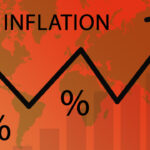When Nixon renounced the gold parity of the dollar, the debt of the world economy in terms of world GDP was about 90%. Since then, central banks began massive printing of money out of thin air, so that in 2018 debt rose to 300% of GDP. The crises like the one of 2007 were rooted in this debt mountain. A similarly dangerous situation was brewing in 2019, and then suddenly came the redemptive Corona crisis, thanks to which central banks were allowed to print even more money and pump it into circulation. In the 18 months since the pandemic began, central banks increased the amount of assets held by 60%! Previously, to print that much, it took a decade. This huge amount of money in the economies naturally led to the inflation we are suffering from now (which is in every textbook on economics and which every economist should have foreseen). So it is not Putin who is responsible for this inflation, but our monetary guardians, the central banks, who hand in hand with politicos imposed lockdowns to plug the resulting deficits by flooding the economy with money. In 2020, inflation was not yet so evident as consumers, spooked by the media, sat at home and spent little. As they gradually relaxed by easing lockdowns, they began to buy more. This accelerated money circulation in the economy accelerated inflation. Not only did supermarket prices rise, but asset prices and risky assets like cryptocurrencies also rose. Now central banks started to raise interest rates to stop this rally. So these biggest buyers of the risky assets are getting off the racing train, so this year will not necessarily be happy for the owners of the stocks and cryptocurrencies. Already in 2022, the markets anticipated the coming decisions of the bankers. The year brought huge losses in both stocks and bonds, which Gefira warned about early on. So in 2023, position yourself on the assets that will be immune to inflation.
Read more from our bulletins.




